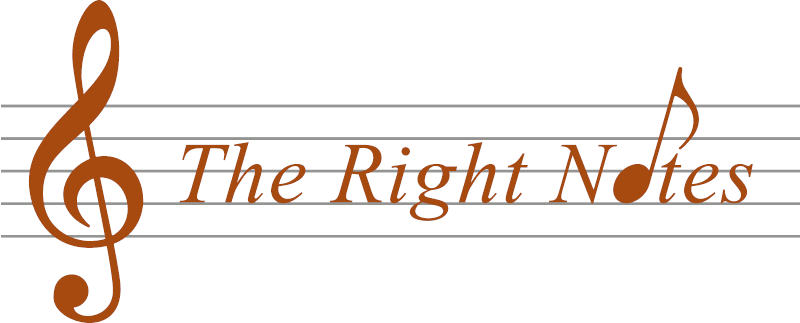The Rite of Spring Story
This is the story of this music by this man, Igor Fyodorovich Stravinsky…
You just heard the very dramatic end, The Sacrificial Dance, of Le Sacre du Printemps, The Rite of Spring, by Igor Stravinsky. It’s a work originally written and premiered in 1913 and revised a couple of times by Stravinsky, and you heard the end of the 1947 revision.
Although today’s programme tells the story of The Rite of Spring, which has been described as the single-most ground-breaking composition in all classical music, you are going hear much more than this great work, for I want to tell you how it came about.
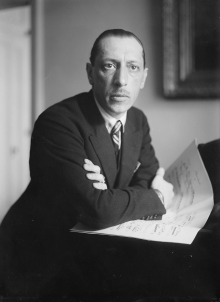
One of the most influential artistic figures of the 20th century, Stravinsky was born in 1882 in a suburb of St Petersburg and came from a long line of Polish politicians and landowners. His father was bass player at the Kiev opera house and the Mariinsky Theatre in St Petersburg, so he had a musical background.
He took piano lessons as a boy and in 1901 went to university in his home city to study Law. However, he was not a diligent student and in the following year he stayed with Rimsky-Korsakov and his family in Heidelberg in Germany, and later went on to take private lessons from the maestro.
By 1904, he had completed his first significant work, a piano sonata. This is the fourth movement.
Stravinsky was himself a pianist, and he said he always composed at the piano and tried out every new composition on it. Yet he was not a pianist-composer in the manner of Rachmaninov and Prokofiev. He wrote comparatively little for the instrument, with only two major solo works, of which this sonata is one.
In 1907, three years after that piece was completed Stravinsky, effectively apprentice to Rimsky-Korsakov, wrote his Symphony in E-flat major, his first composition for orchestra, and dedicated the work to his mentor.
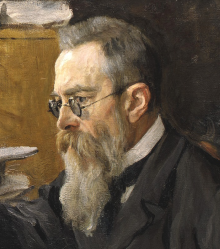
This has actually been given the Opus number 1, it being his first published work during his apprenticeship with Rimsky-Korsakov.
If the first piece you heard was a student work, this is very much the work of an apprentice. There’s little in the way of originality here but it is a part of today’s story.
Here is the symphony’s second movement.
If Stravinsky has his own musical voice, it was nowhere to be heard in that piece. I think as a symphony it is charming ,but it’s derivative with nothing to suggest that just six years after it was written its composer would turn the musical world upside down with The Rite of Spring.
It’s been suggested that if Rimsky-Korsakov's death in 1908 had not ended Stravinsky's formal composition studies, and so encouraged him to look further afield for influences, it would have taken longer for The Rite of Spring to be conceived. Indeed, perhaps it would never have been conceived at all.
So, in just six years Stravinsky developed from a promising if not exactly innovative composer to a genius who set music on a new course. What happened in those six years?
Well, what we now think of as Stravinsky’s voice is much more evident in the next piece. In 1908, a year after his Symphony in E-flat major, he wrote his Scherzo Fantastique, inspired by an essay of the time called The Life of Bees – and you can hear the bees in this piece.
A note on the flyleaf of the score read: “This piece is inspired by an episode in the life of the bees. The first section gives an impression of life and activity in the hive. The central section, a slow movement, depicts sunrise and the nuptial flight of the queen bee. The love flight with her chosen mate, and his death. The third section, a reprise of the first, shows the peaceful activity of the hive continuing. Thus the whole piece becomes for us human beings the fantastic picture of an eternal cycle.”
Stravinsky actually dismissed those words contemptuously as little more than sales blurb. However, this is a brilliant work and it’s interesting because it gives you a sense of where this young genius was going musically. Let’s hear it now.
The Scherzo Fantastique was given the opus number 3. Opus No. 4 was the next piece you are going to hear, Fireworks, which also written in 1908 and which was premiered the following year at the same concert as the Scherzo Fantastique. He actually wrote this piece as a wedding present for Rimsky-Korsakov’s daughter.
As I said, the Scherzo Fantastique and Fireworks were premiered in 1909. That concert, in St Petersburg, had a key role in the development of 20th century music for in the audience was a certain Sergei Diaghilev, art critic, patron, impresario and founder of the Ballets Russes who was hugely impressed by what he heard.
He immediately asked Stravinsky to arrange some pieces by Chopin for his ballet company, and in 1910 he commissioned the rising star of Russian music to write the music that put him on the world map.
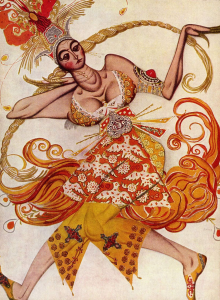
Based on Russian folk tales, the ballet The Firebird was the first of Diaghilev's Ballets Russes productions to have a totally original score composed for it. The suite from it had an immediate impact with the public and critics, who praised it for the clever and innovative way it made use of music, dance and décor. It was a taste of things to come.
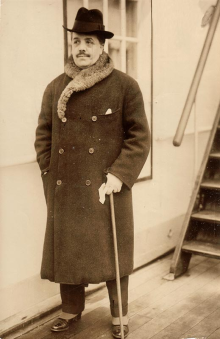
Diaghilev said of Stravinsky at the time, "Mark him well — he is a man on the eve of celebrity.” Rachmaninov was a big fan of the work. "Great God,” he said when he heard the finale for the first time. “What a work of genius this is! This is true Russia!"
Let’s hear the end of the Firebird Suite now. First, though, comes a piece called simply Lullaby, followed by the finale.
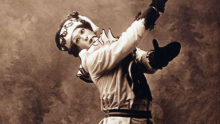
It was while he was composing The Firebird that Stravinsky began putting together ideas for what was to become The Rite of Spring. However, he had to put that on the back-burner when Diaghilev gave him another commission, to write the score for a ballet, or rather something then called four burlesque scenes, called Petrushka. Petrushka is a kind of Russian version of Punch or Pinocchio.
It’s the story of the loves and jealousies of three puppets, Petrushka, a ballet dancer and a Moor. The ballet was first performed by Ballets Russes in Paris in 1911 with Vaslav Nijinsky dancing Petrushka. It had all the Diaghilev hallmarks of bringing together the best in contemporary music, dance and design – all of which were to evident in bucketloads in his next big commission, The Rite of Spring.
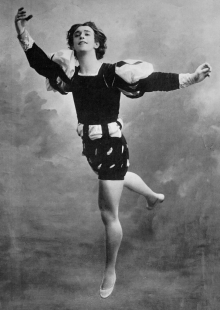
Stravinsky wrote about Petrushka: “In composing the music, I had in my mind a distinct picture of a puppet, suddenly endowed with life, exasperating the patience of the orchestra with diabolical cascades of arpeggios. The orchestra in turn retaliates with menacing trumpet blasts."
So, let’s hear something from Petrushka, this story of a puppet who came to life, but who was burdened by human emotions like love, jealousy, and rage. The first piece you will hear is called The Crowds, and it’s from the ballet’s opening scene. Then you will hear music from a scene called Petrushka’s Room, or Cell.
Stravinsky immersed himself in the writing of The Rite of Spring in the summer of 1911. He was determined that it would be a significant work, even collaborating with an archaeologist and folklore expert who advised him on historic rites and rituals.
The score was written in a rented house in Switzerland, in a tiny room with just enough space for an upright piano, a table and two chairs.
Stravinsky completed the composition, two parts of roughly equal length, by the beginning of 1912 and finished the instrumentation by late spring.
With the sub-title, Pictures of Pagan Russia in Two Parts; the ballet depicts various primitive rituals celebrating the advent of spring, after which a young girl is chosen as a sacrificial victim and dances herself to death. Stravinsky's score contains many novel features for its time, including experiments in tonality, rhythm and dissonance.
In a note to the conductor Serge Koussevitzky, Stravinsky described The Rite of Spring as "a musical-choreographic work, representing pagan Russia ... unified by a single idea: the mystery and great surge of the creative power of spring". Actually, the work lacks a specific plot or narrative, and is in fact a succession of choreographed episodes.
Stravinsky gave the first part of The Rite of Spring the title The Kiss of the Earth. It consists of games and ritual dances interrupted by a procession of sages, culminating in a frenzied dance as the people embraced the spring. Part Two, The Sacrifice, is darker and featured secret night games of maidens, leading to the choice of one of them for sacrifice and her eventual dance to the death before the sages.
The first published version of The Rite of Spring was actually a four-hand piano arrangement, the first half of which Stravinsky and Claude Debussy played together in 1912. On 8th March 1913, Stravinsky completed the orchestral score. He showed it to Maurice Ravel, who told him it would be a big and important success.
Orchestral rehearsals began in late March, prompting revisions to some problematic passages. Actually, Stravinsky continued to make changes to the score for the next 30 years. There’s a quote by Stravinsky about what the orchestra thought of it. "The musicians thought it absolutely crazy. At one point—a climactic brass fortissimo—the orchestra broke into nervous laughter at the sound, causing Stravinsky to intervene angrily.”
Its premiere, at the Théâtre de Champs-Elysées on May 29, 1913, conducted by Pierre Monteux, caused a scandal. The work was such a violent wrench from every musical tradition that had gone before that, to many people, it seemed like the work of a madman.
There is no space here to illustrate the many technical innovations in this primordial, elemental score, but it was not just the shock of hearing the music, nor Nijinsky’s exotic choreography, nor the bizarre stage settings that prompted what is sometimes glibly referred to as a riot that at the premiere.
There were anti-Russian, anti-Diaghilev and anti-Nijinsky factions at work in Paris, and some people were determined to disrupt proceedings before a note of music had been heard.
So, was there a riot at the premiere? Stravinsky himself later wrote: “Mild protests against the music could be heard at the beginning.” After the strangest, highest bassoon solo opens the music we hear sinewy woodwind lines.
Then, Stravinsky wrote: “When the curtain opened on the group of knock-kneed and long-braided Lolitas jumping up and down, the storm broke.”
That was Nijinsky's choreography for the Dance of the Adolescents section, the music's first and still-shocking moment of dissonance and skewed rhythm. Stravinsky said that at this point, "Cries of 'Ta gueule’ [shut up] came from behind me. I left the hall in a rage. I have never again been that angry." Stravinsky spent the rest of the performance in the wings, holding on to Nijinksy's tails as the choreographer shouted out cues to his dancers over the din.
There is no evidence of mass brawling. One critic described the whole thing as merely a "rowdy debate" between rival factions in the audience. “After the performance," Stravinsky noted, "we were excited, disgusted, and … happy. I went with Diaghilev and Nijinsky to a restaurant. Diaghilev's only comment was, 'Exactly what I wanted.' Quite probably, he had already thought about the possibility of such a scandal when I first played him the score, months before."
A year later, the premiere concert performance of The Rite of Spring was given in the Casino de Paris. Stravinsky was carried from the hall shoulder-high in triumph. Nothing he wrote subsequently had the same absolutely shattering impact on the musical world. Let’s sit back, then, and enjoy the 1947 revised version of The Rite of Spring, played by the Berlin Philharmonic under Herbert von Karajan.
Featured composers:
Featured genres:
The Rite of Spring Story playlist
Each Spotify track has been chosen specifically; however, the corresponding YouTube videos may be performed by different orchestras.
